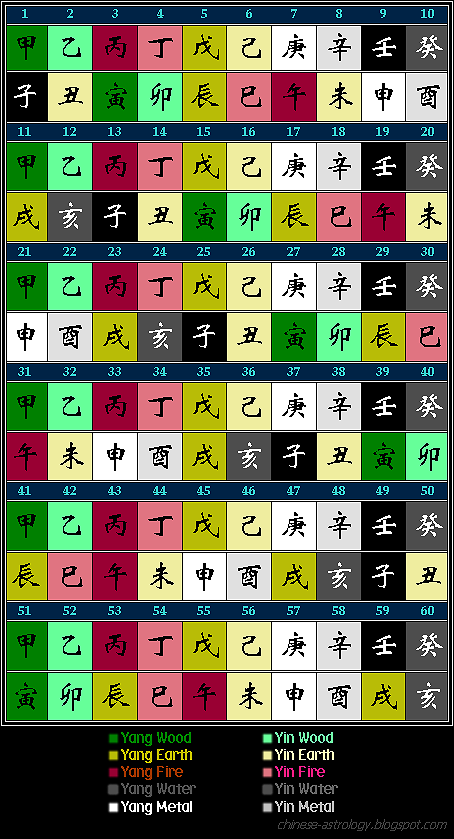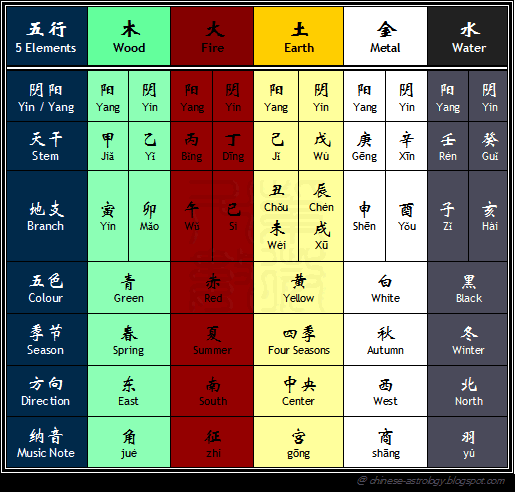「Gān Zhī 」 , is the most significant counting system in the Chinese Calendar.
Its history goes back to even before the invention of Chinese characters.
Stem-Branch symbols were found on ancient Chinese Oracle Bones or 甲骨文.
10 Heavenly Stems 天干 「Tiān Gān 」

Initially, the stems were created to count the DAY only.
For example, the 1st day is 甲, 2nd day is 乙 .....the 10th day is 癸, and the
11th day goes back to 甲 and so on. Every 10-day cycle is called a 旬 「Xún 」.
Stems are still being used in Chinese community today. For example, in trading,
high-quality goods are considered 甲等货. In school, the
best class is always 甲班, the second best class is 乙班.
Then, the branches were used to count the MONTHS.
The Branches were representative of 12 selected animals,
which also resulted in the origin of the Chinese Horoscope.
12 Earthly Branches 地支 「Dì Zhī 」

Later on, when ancient scholars applied the 12 Earthly Branches into
recording the YEAR and HOUR as well, it got way too confusing and
complicated due to the many repetitions of the same characters.
So, for the ease of differentiating one day from another, it was decided to pair
the stems and branches to form 60 different combinations for the counting
system. There are only 60 combinations, instead of the available 120, because
odd-numbered (Yang) stems can only be paired with odd-numbered branches,
and even-numbered (Yin) stems can only be paired with even-numbered branches.

60-Year Cycle 六十花甲子
To explain how this 'numbering' works, denote the stems and branches by their numbers.
So, the first year will be (1,1) which is (甲,子), followed by the second year (2,2) which
is (乙,丑) and then the third year (3,3) which is (丙,寅)... up to (10,10) which is (癸,酉).
But now we have run out of stems, so we start from the first stem again, and the eleventh
year will be (1, 11) which is (甲,戌), and the twelveth year (2, 12) which is (乙,亥).
Now we have run out of branches, too, so we start from the first branch again, and the
thirteenth year becomes (3, 1) or (丙,子), and the fourteenth year (4,2) or (丁,丑)
......... and so on and so forth.......
We continue in this way through 6 cycles of stems and 5 cycles of branches
up to the 60th year which is (10, 12) or (癸,亥). The next number, 61st year,
will then again be (1,1) or (甲,子), and this starts a new cycle.
The end-product is the 60-year cycle, also known as 六十花甲子 「Liù Shí Huā Jia Zi 」.
六十 means 60, 甲子 refers to the first of the 60 Stem-Branch combos.

Taking the first year (甲子) as an example, since 甲 is Yang Wood, and 子 is Rat,
then that year would be a Yang Wood Rat year. The 13th Year, which is also
a Rat year, would be 丙子 - a Yang Fire Rat year.
In ancient China, from 汉 Han Dynasty onwards, the Emperors assummed reigned
titles which are changed every few years. The titles were usually placed before
the year name for distinction. For example, "康熙壬寅" 「Kāng Xī Rén Yín 」
would mean Emperor 康熙 reigned in the year of 壬寅, and that would be
1662 AD according to the Year Cycle. This dating lends legitimacy of the reign
of each Emperor and makes it difficult for Chinese historians to take sides
(politically) in cases of disputed succession or revolts.
This Gan Zhi naming of years is sometimes still used today, for example,
the Reform Movement of 1898 was called "戊戌變法 Wu Xu Bian Fa and
the Revolution of 1911 was called "辛亥革命 Xin Hai Ge Ming.
Going by historical records, the last "甲子 Jia Zi year was in 1984, and
the next one will be in year 2045. So, year 2005 is the 22nd year (乙酉年)
of the 78th Cycle, which is a Yin Wood Chicken Year.

阴阳 五行
Through the years, people started to adopt stem of the year as the stems
of the months, and stem of the day as the stems of the hours. The Gān Zhī(s) of
year, month, day and hour together form the Eight Characters or 八字 「Bā Zì 」
which determined one's date and time of birth.
In 《ZWDS 》, the Heavenly Stems and Earthly Branches system plays an important
part in the plotting of the Birth Chart, placement of stars, and in interpreting the chart.
As each Stem and Branch has its own Element and is either Yin or Yang, the 60-year
cycle system became the 'foundation' for many branches of Chinese Astrology. The
following chart summarises the relationship between the 10 Heavenly Stems, 12
Earthly Branches, Yin and Yang, the 5 Elements as well as the environment.



